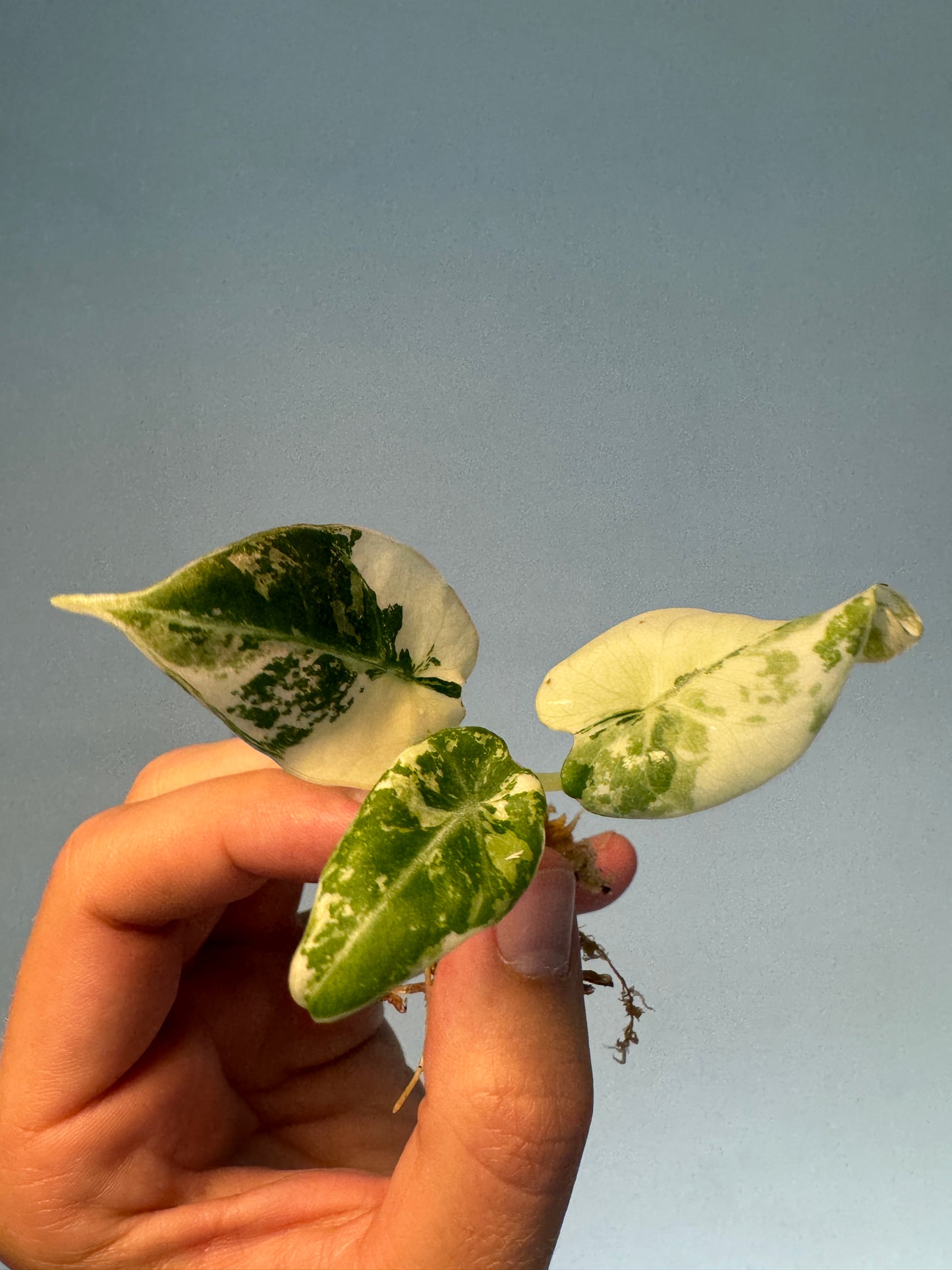Plantthatplant
Alocasia reginula ’Black Velvet’ Albo Variegata
Alocasia reginula ’Black Velvet’ Albo Variegata
Couldn't load pickup availability
Share
The plant in the pictures might not be the one you get but all looks great!
Heritage and Origin
Alocasia reginula 'Black Velvet' is a striking tropical plant known for its dark, velvety leaves, which contrast beautifully with their silvery veins. This plant is native to the tropical rainforests of Southeast Asia, particularly Borneo. Its name, "reginula," translates to "little queen," a nod to its regal appearance despite its relatively compact size. Alocasia reginula 'Black Velvet' is part of the Araceae family, which includes other well-loved Alocasias known for their dramatic foliage.
Care Requirements in a Scandinavian Indoor Setting
Caring for Alocasia reginula 'Black Velvet' in a Scandinavian indoor environment, where light levels and humidity can be challenging, requires some adaptations to mimic its tropical habitat.
-
Light Requirements:
- Optimal Light: Alocasia 'Black Velvet' thrives in bright, indirect light. In Scandinavian homes, where sunlight can be sparse, especially during the winter, it's best to place the plant near an east or north-facing window to ensure it receives gentle morning or filtered light. Avoid direct sunlight, as it can cause the delicate leaves to burn.
- Supplemental Lighting: During the darker winter months, providing supplemental light with LED grow lights can help maintain the plant's health and vibrancy. Choose a light that offers a full spectrum to mimic natural sunlight as closely as possible.
-
Temperature and Humidity:
- Temperature: This plant prefers warm conditions, ideally between 18-24°C (65-75°F). Scandinavian homes are generally well-heated, but it's important to keep the plant away from drafts and sudden temperature changes, which can stress it.
- Humidity: Alocasia 'Black Velvet' requires higher humidity, ideally between 60-80%. During the dry winter months, consider using a humidifier to maintain appropriate humidity levels, or place the plant on a tray of pebbles with water to create a micro-humid environment around it. Regular misting can also help but ensure the leaves do not stay wet for long periods.
-
Watering:
- Watering Schedule: Water the Alocasia 'Black Velvet' when the top inch of soil feels dry. This plant is sensitive to overwatering, which can lead to root rot. Use room-temperature water and ensure the pot has adequate drainage to prevent water from accumulating at the bottom.
- Watering Tips: During the growing season (spring and summer), water more frequently but reduce watering in the autumn and winter when the plant's growth slows. The plant should not be allowed to dry out completely, but it also dislikes being waterlogged.
-
Soil and Potting:
- Soil Mix: Alocasia 'Black Velvet' thrives in a well-draining, loose soil mix. A combination of peat or coconut coir, perlite, and orchid bark provides a good balance of moisture retention and aeration. This mimics the plant's natural environment where its roots are used to well-drained substrates.
- Repotting: Repot the plant every 1-2 years or when it outgrows its pot. When repotting, be gentle with the roots and choose a pot only slightly larger than the current one, as this plant prefers to be somewhat root-bound.
-
Fertilization:
- Feeding: During the growing season, feed Alocasia 'Black Velvet' every 4-6 weeks with a balanced, diluted liquid fertilizer. This will support its growth and help maintain the deep, rich color of its leaves. Reduce feeding during the colder months when the plant's growth naturally slows down.
-
Pest Control:
- Common Pests: Watch out for common pests like spider mites, aphids, and mealybugs. These pests are more likely to appear in low-humidity conditions, so maintaining the right humidity level can also help in pest prevention.
- Prevention and Treatment: Regularly inspect the leaves, especially the undersides, for any signs of pests. If pests are detected, treat them promptly with insecticidal soap or neem oil to prevent them from spreading.








